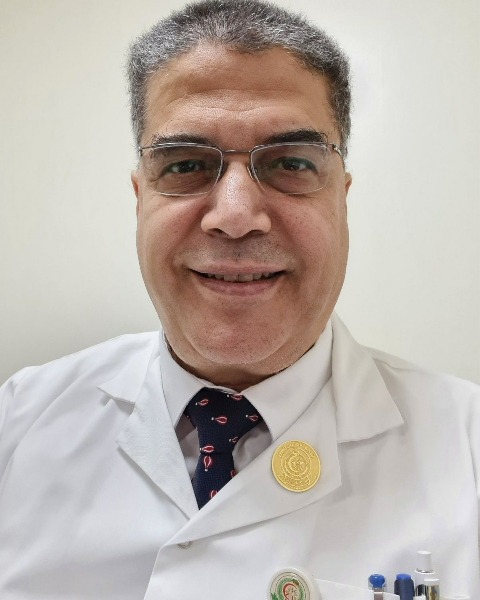Security and Protection
Poster Session A
(POS-21) Challenges for Education and Learning Needs Assessment in Radiological Source Security
Monday, August 25, 2025
3:50 PM - 5:10 PM EDT
Location: Capitol Ballroom
Lamiaa Fiala - Professor (she/her/hers), Princess Noura Bent Abdelrahman University
Zenobia Hooman - Professor (she/her/hers), Kings College London
Jason Harris - Associate Dean of Graduate Students and Postdoctoral Scholars Professor of Radiological Health Sciences Director, Health Physics Program Director, Center for Radiological and Nuclear Security (CRANS), Purdue University
Zenobia Hooman - Professor (she/her/hers), Kings College London
Jason Harris - Associate Dean of Graduate Students and Postdoctoral Scholars Professor of Radiological Health Sciences Director, Health Physics Program Director, Center for Radiological and Nuclear Security (CRANS), Purdue University
Princess Noura Bent Abdelrahman University
, Kings College London
, Purdue University
, Kings College London
, Purdue University

Mostafa Kofi (he/him/his)
Consultant
Prince Sultan Military Medical City
riyadh, Saudi Arabia
Submitting Author(s)
Training and learning needs assessments in radiological source security are essential to ensure a well-prepared workforce capable of managing the risks associated with radioactive materials. The process involves identifying the knowledge, skills, and capabilities required to handle, secure, and respond to incidents involving radiological sources effectively.
A learning needs assessment (LNA) was conducted early this year using a Google Forms survey. We surveyed participants of the INMM-Africa Chapter members using a comprehensive sample and also distributed the survey to INMM-Africa Chapter Members' colleagues and junior staff. Here are some key aspects based on recent findings:
1. Tailored Training Programs: Training must address specific occupational roles, such as radiation protection officers, emergency responders, and law enforcement. Programs often include hands-on exercises, such as detecting and securing radiological sources, and theoretical knowledge of regulations and safety protocols. These programs are designed to align with international standards, such as those of the IAEA and the Department of Energy (DOE) (1, 2)
2. Comprehensive Learning Materials: Effective training packages incorporate lecture plans, practical exercises, and on-the-job training opportunities. The IAEA, for example, offers specialized training materials for different audiences, such as health professionals, industrial operators, and emergency responders, to ensure the safe use of radioactive materials. (3)
3. Assessment of training needs: Assessments often involve evaluating the existing competency levels of personnel and the adequacy of current security infrastructure. This helps identify gaps in knowledge and technology, guiding the development of customized training modules. (1, 2)
4. Global Collaboration: Initiatives like the DOE's Office of Radiological Security (ORS) emphasize global partnerships to enhance training, provide equipment, and implement security measures, ensuring sustainable security systems for radioactive sources
5. Practical and Real-World Simulations: Training facilities such as the Idaho National Laboratory provide immersive scenarios for responders to practice detection, containment, and communication during radiological incidents. These include simulations in controlled environments or field exercises in real-world settings like public events (4, 2)
A learning needs assessment (LNA) was conducted early this year using a Google Forms survey. We surveyed participants of the INMM-Africa Chapter members using a comprehensive sample and also distributed the survey to INMM-Africa Chapter Members' colleagues and junior staff. Here are some key aspects based on recent findings:
1. Tailored Training Programs: Training must address specific occupational roles, such as radiation protection officers, emergency responders, and law enforcement. Programs often include hands-on exercises, such as detecting and securing radiological sources, and theoretical knowledge of regulations and safety protocols. These programs are designed to align with international standards, such as those of the IAEA and the Department of Energy (DOE) (1, 2)
2. Comprehensive Learning Materials: Effective training packages incorporate lecture plans, practical exercises, and on-the-job training opportunities. The IAEA, for example, offers specialized training materials for different audiences, such as health professionals, industrial operators, and emergency responders, to ensure the safe use of radioactive materials. (3)
3. Assessment of training needs: Assessments often involve evaluating the existing competency levels of personnel and the adequacy of current security infrastructure. This helps identify gaps in knowledge and technology, guiding the development of customized training modules. (1, 2)
4. Global Collaboration: Initiatives like the DOE's Office of Radiological Security (ORS) emphasize global partnerships to enhance training, provide equipment, and implement security measures, ensuring sustainable security systems for radioactive sources
5. Practical and Real-World Simulations: Training facilities such as the Idaho National Laboratory provide immersive scenarios for responders to practice detection, containment, and communication during radiological incidents. These include simulations in controlled environments or field exercises in real-world settings like public events (4, 2)
